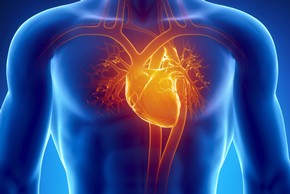- You are here:
- Home »
- Blog »
- heart disease »
- Cardiac Rehabilitation the easy way?
Cardiac Rehabilitation the easy way?

Consider cardiac rehab the easy way. I don’t know why cardiac rehab referral rates are so low, as mentioned in the article linked below, but I thought I’d explain what I do because I believe my cardiac rehabilitation is the easy way… and it works.
You see, chemotherapy damaged my heart and sent me into chronic atrial fibrillation aka Afib. I was prescribed metoprolol, had a negative reaction and decided to research and try some evidence-based non-toxic therapies to rehab my heart.
Spoiler alert- that diagnosis of CIC was in late 2010. I bottomed out with an ejection fraction of 35%- the rehab therapies I will list below got my EF back up to 45-50 where I have remained since. In short, all of my heart metrics as measure by my annual echocardiogram are stable. All with evidenced-based non-toxic, non-conventional therapies.
What are the best cardiac rehabilitation methods?
- Exercise Training: This typically involves aerobic exercises like walking, jogging, cycling, and swimming, tailored to the individual’s needs and capabilities. Exercise helps improve cardiovascular fitness, strength, and endurance, and can also help manage weight and reduce stress.
- Education and Counseling: Providing patients with information about heart disease, risk factors, medications, diet, and lifestyle changes is crucial. Counseling can also address psychological factors such as stress, anxiety, and depression, which can affect recovery and quality of life.
- Nutritional Counseling: A heart-healthy diet rich in fruits, vegetables, whole grains, lean proteins, and healthy fats can help manage cholesterol levels, blood pressure, and weight. Nutritionists can provide personalized dietary advice and help patients make healthier food choices.
- Smoking Cessation Programs: Smoking is a major risk factor for heart disease, so quitting smoking is essential for cardiac rehabilitation. Programs offering support, counseling, and nicotine replacement therapy can help individuals quit successfully.
- Medication Management: Ensuring that patients understand their medications, how to take them properly, and the importance of adherence is vital. Medications may include blood thinners, cholesterol-lowering drugs, blood pressure medications, and others to manage heart-related conditions.
- Stress Management and Relaxation Techniques: Techniques such as deep breathing, meditation, yoga, and mindfulness can help reduce stress and promote relaxation, which may have positive effects on heart health.
- Support Groups: Connecting with others who have experienced similar heart issues can provide emotional support, encouragement, and motivation during the rehabilitation process.
- Continuous Monitoring and Follow-up: Regular check-ups with healthcare providers to monitor progress, adjust treatment plans, and address any concerns are essential for long-term success in cardiac rehabilitation.
And finally, heart-healthy nutrition- which to me is the Mediterranean diet.
David Emerson
- Cancer Survivor
- Cancer Coach
- Director PeopleBeatingCancer
Cardiac rehab referral rates lacking after CICU discharge, especially for patients with HF
“In a new study, nearly 63% of patients discharged from the cardiac ICU had an indication for cardiac rehabilitation, yet only 30% were referred upon discharge.
According to results published in the American Journal of Cardiology, cardiac rehabilitation was most commonly indicated in patients with HF with reduced ejection fraction (38%), those who underwent cardiothoracic surgery (26%) and those with STEMI (23%). While only 30% of indicated patients received a cardiac rehabilitation upon referral from the cardiac ICU, the percentage of referred patients grew to 63% at 18 months post-discharge.
Researchers found that patients were most frequently referred for cardiac rehabilitation at discharge from the cardiac ICU following STEMI (91%), -non-NSTEMI (80%) and post-percutaneous coronary intervention (80%).
When the researchers analyzed referral rates among patients with HFrEF, they found that only 35% of discharges were referred.
“Despite known benefits from [cardiac rehabilitation] such as improved quality of life and decreased hospitalization rates, heart failure patients can have referral rates as low as 10%. In our study, we also found that heart failure patients represented the subgroup with the lowest rate of referral,” Michael Sola, MD, of the department of internal medicine at University of Michigan, and colleagues wrote. “Interestingly, these referral rates were higher than national averages over the course of our study. However, when compared to referral rates with patients following STEMI and cardiothoracic surgery, it is clear heart failure patients represent a population with significant underutilization of CR.”
This retrospective study included patients aged 18 years or older who were admitted to the University of Michigan cardiac ICU for more than 48 hours from March 2016 to March 2017. The study excluded patients with in-hospital mortality or those discharged against medical advice, to hospice or to transfer. If cardiac rehabilitation was indicated, based on ACC/AHA guidelines, researchers reviewed medical records through September 2017 to determine referral and participation rates. If there was no referral, records were analyzed for potential barriers to CR referral.
In other results, the researchers found nonreferral was “rarely documented.” In this study, among those not referred for cardiac rehabilitation, 87% of cases did not have an explanation documented for non-referral.
“[Developing] systems to promote [cardiac rehabilitation] referral in HFrEF following CICU admission has the potential to improve utilization of an intervention with proven clinical benefit,” the authors wrote.
Researchers suggested potential solutions such as requiring inpatient physicians to determine patient candidacy for cardiac rehabilitation as part of the hospital discharge process and automated cardiac rehabilitation referral or home-based cardiac rehabilitation programs to improve patient enrollment. However, they stated the feasibility and efficacy of these potential solutions require further evaluation. – byScott Buzby


